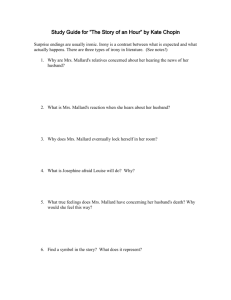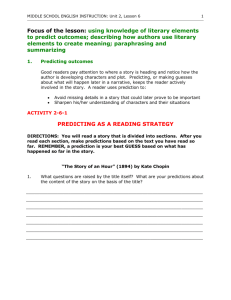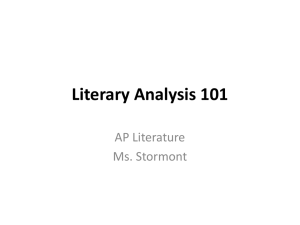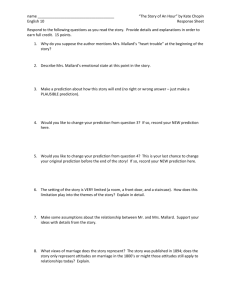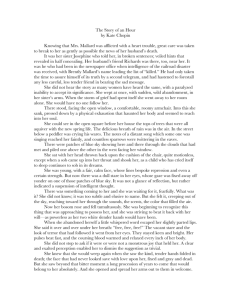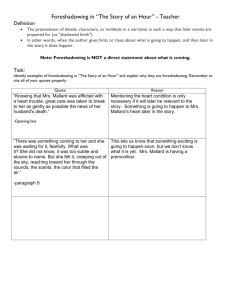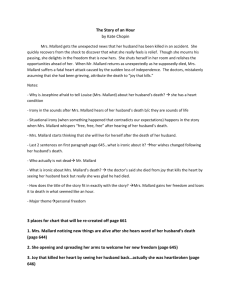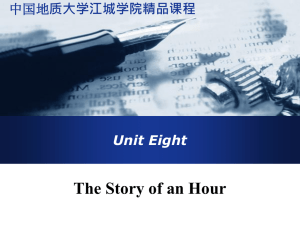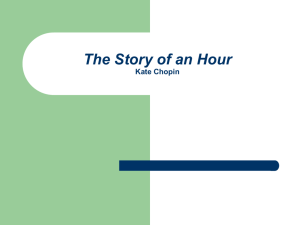10. Plot Summary vs. Literary Analysis What is a plot summary?i • A
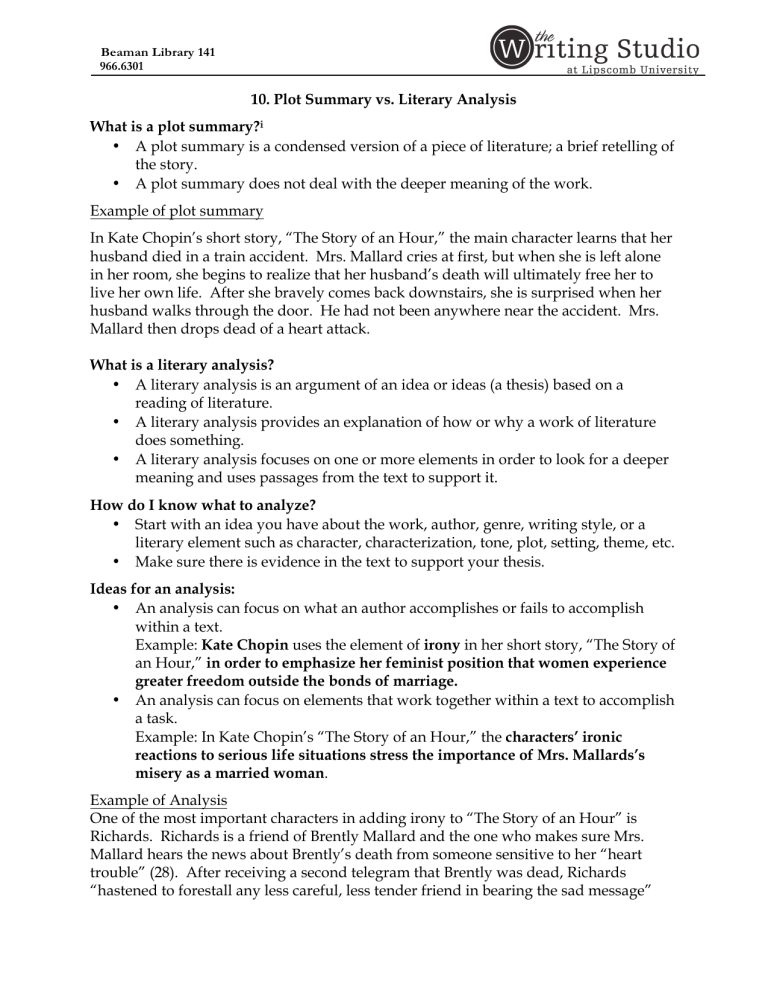
Beaman Library 141
966.6301
10. Plot Summary vs. Literary Analysis
What is a plot summary?
i
• A plot summary is a condensed version of a piece of literature; a brief retelling of the story.
• A plot summary does not deal with the deeper meaning of the work.
Example of plot summary
In Kate Chopin’s short story, “The Story of an Hour,” the main character learns that her husband died in a train accident. Mrs. Mallard cries at first, but when she is left alone in her room, she begins to realize that her husband’s death will ultimately free her to live her own life. After she bravely comes back downstairs, she is surprised when her husband walks through the door. He had not been anywhere near the accident. Mrs.
Mallard then drops dead of a heart attack.
What is a literary analysis?
• A literary analysis is an argument of an idea or ideas (a thesis) based on a reading of literature.
• A literary analysis provides an explanation of how or why a work of literature does something.
• A literary analysis focuses on one or more elements in order to look for a deeper meaning and uses passages from the text to support it.
How do I know what to analyze?
• Start with an idea you have about the work, author, genre, writing style, or a literary element such as character, characterization, tone, plot, setting, theme, etc.
• Make sure there is evidence in the text to support your thesis.
Ideas for an analysis:
• An analysis can focus on what an author accomplishes or fails to accomplish within a text.
Example: Kate Chopin uses the element of irony in her short story, “The Story of an Hour,” in order to emphasize her feminist position that women experience greater freedom outside the bonds of marriage.
• An analysis can focus on elements that work together within a text to accomplish a task.
Example: In Kate Chopin’s “The Story of an Hour,” the characters’ ironic reactions to serious life situations stress the importance of Mrs. Mallards’s misery as a married woman .
Example of Analysis
One of the most important characters in adding irony to “The Story of an Hour” is
Richards. Richards is a friend of Brently Mallard and the one who makes sure Mrs.
Mallard hears the news about Brently’s death from someone sensitive to her “heart trouble” (28). After receiving a second telegram that Brently was dead, Richards
“hastened to forestall any less careful, less tender friend in bearing the sad message”
Beaman Library 141
966.6301
(28). Richards is also the one who attempts to shield Mrs. Mallard from seeing her husband when he arrives home quite alive, but this time he is too late. Ultimately,
Richards’ sense of timing is at the core of Mrs. Mallard’s heart failure. If he had waited to bring the news of her husband’s supposed death, she would not have realized that without him she would be free, and she would not have “died of heart disease – of a joy that kills” (29). i
Axelrod, Rise B., and Charles R. Cooper. The St. Martin’s Guide to Writing. 8 th ed. Boston: Bedford/St. Martin’s, 2008.
Barnet, Sylvan, and William E. Cain. A Short Guide to Writing about Literature.
9 th ed. New York: Longman, 2003. Print.
Smith, Allison D., and Trixie G. Smith, and Stacia Rigney Watkins. The Pop Culture Zone: Writing Critically about Popular Culture.
Boston: Wadsworth Cengage Learning, 2009.

